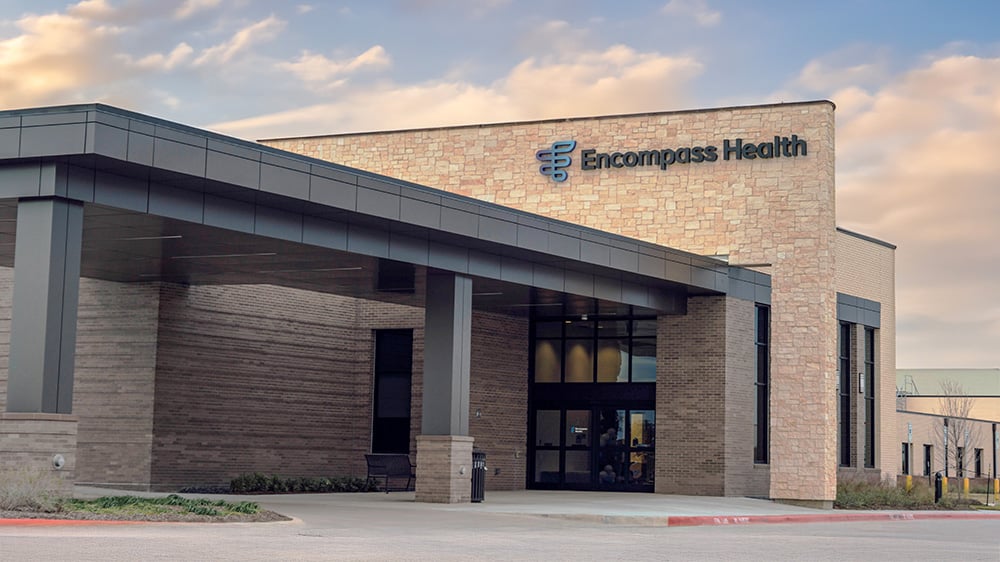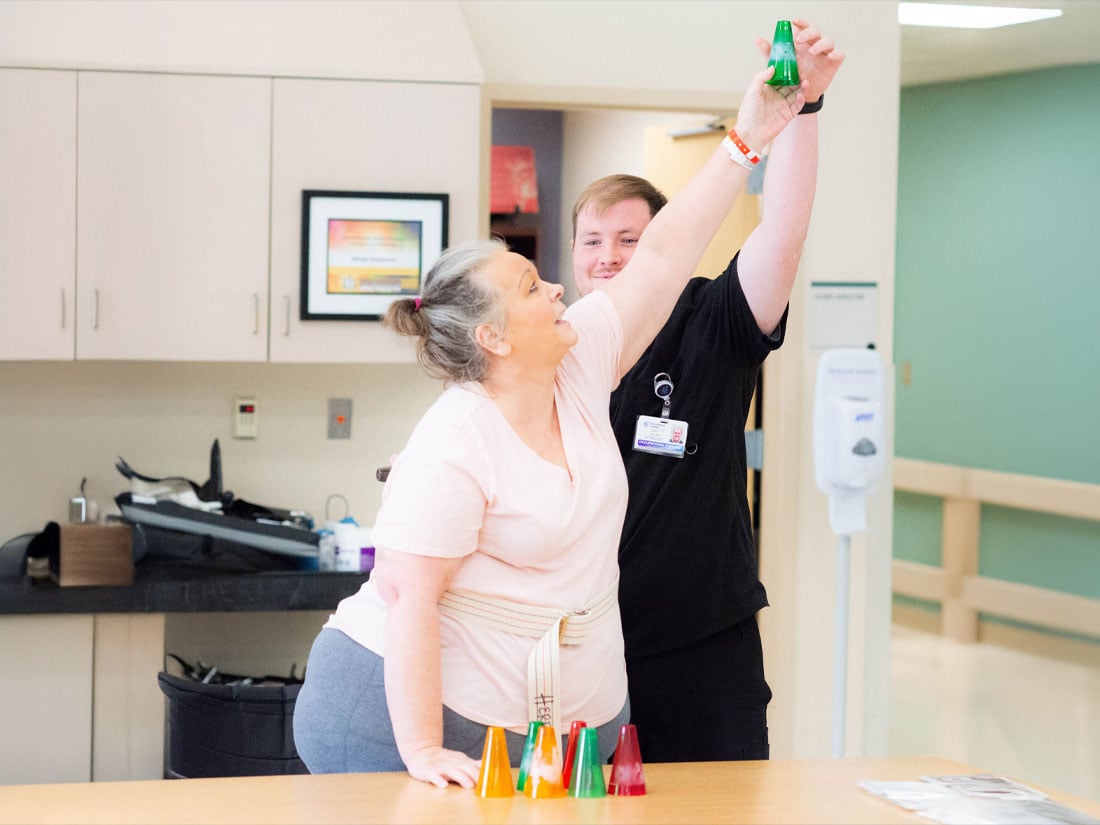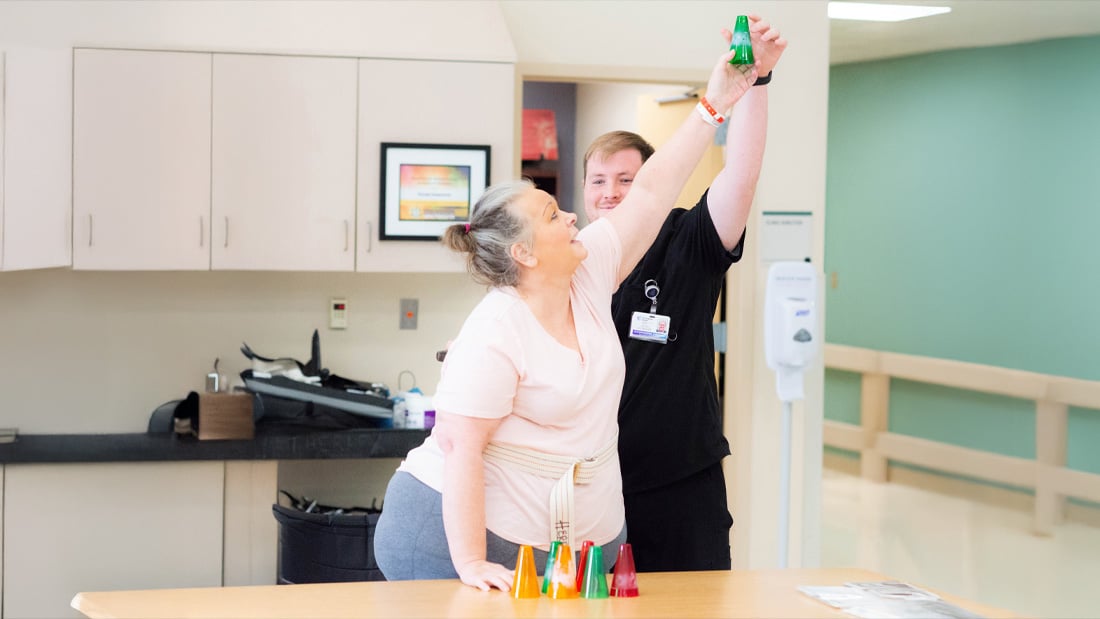Getting started with stroke rehabilitation
If you or your loved one has recently experienced a stroke, we understand this can be a challenging and overwhelming time. Our goal is to help you continue your recovery journey so you can get back to the people, work and activities you love.
We're here to support you with an individualized rehabilitation program designed around your lifestyle and needs—because every stroke and every recovery is unique. As the nation’s largest provider of inpatient rehabilitation, we're committed to delivering the most advanced, personalized care possible.
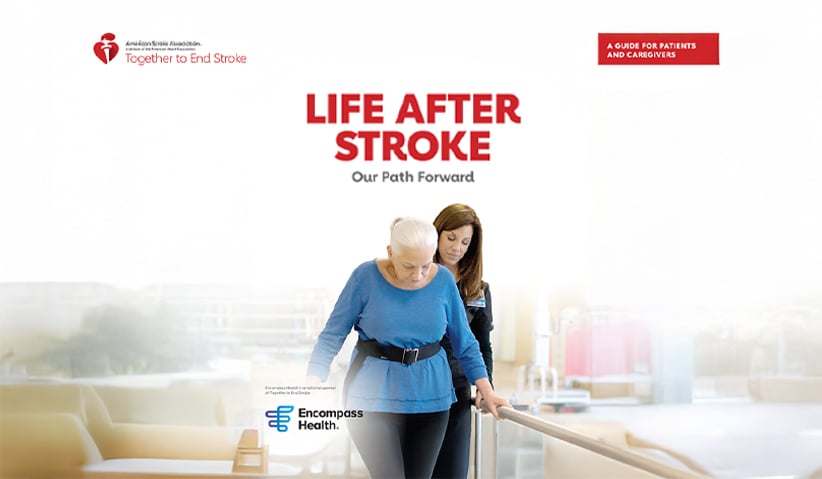
Life After Stroke Guide

What's included in your stroke therapy
Physical activities
- Motor-skill exercises to help rebuild muscle strength and coordination.
- Speech therapy for speaking and swallowing challenges.
- Mobility aid training to safely use a walker, cane, wheelchair or ankle brace.
- Spasticity therapy to relieve muscle tension and improve your range of motion.
- Activities of daily living that help you dress, cook, drive and manage other household tasks.
Cognitive activities
- Cognitive therapy to address memory, processing, problem-solving, social skills, judgment and safety awareness.
- Communication exercises to regain lost abilities in listening, writing and comprehension.
- Activities of daily living to relearn signatures, medication management and financial skills.
The Encompass Health difference
Experience that matters
As the largest network of inpatient rehabilitation hospitals, we have the experience and access to the latest treatments and technology to help you recover more quickly and effectively.
Compassionate care
Your rehabilitation is not just about physical recovery. It's about you as a person. Our multidisciplinary care team will provide unwavering support and give you the strength, skills and confidence needed to regain your highest level of independence.
Exceptional results
Intensive therapy works. At our hospitals, you will receive three hours of therapy per day, five days a week, along with frequent visits from your physician and 24/7 nursing care. This combination is designed to help you achieve the best possible recovery.
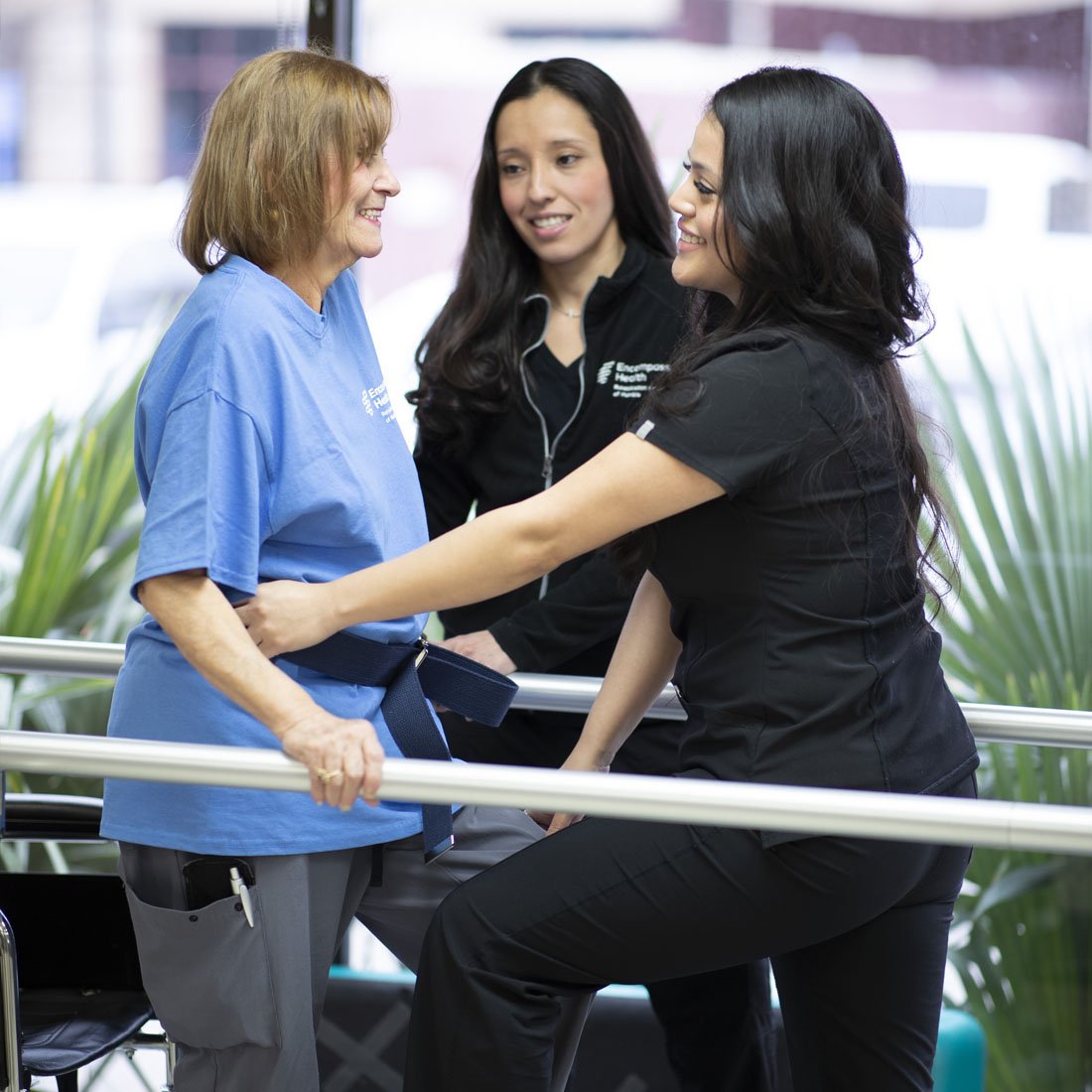
Your care team

Stroke rehabilitation FAQs
